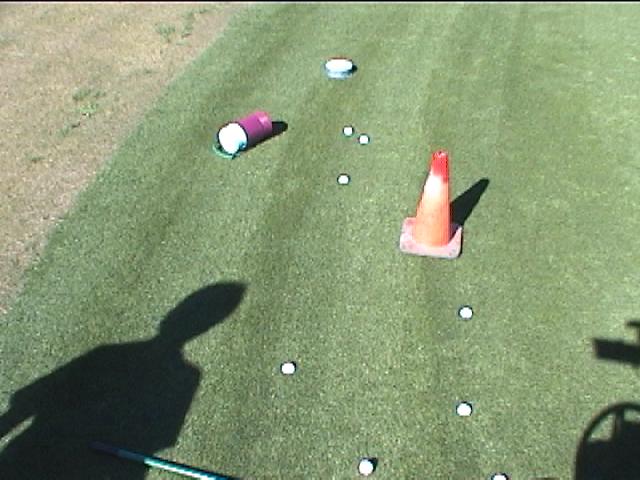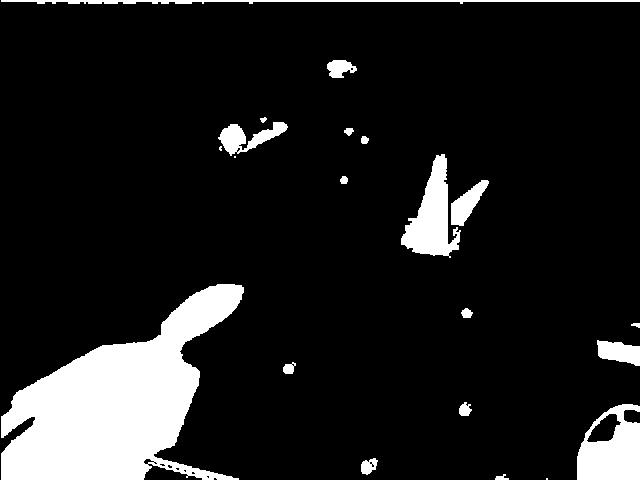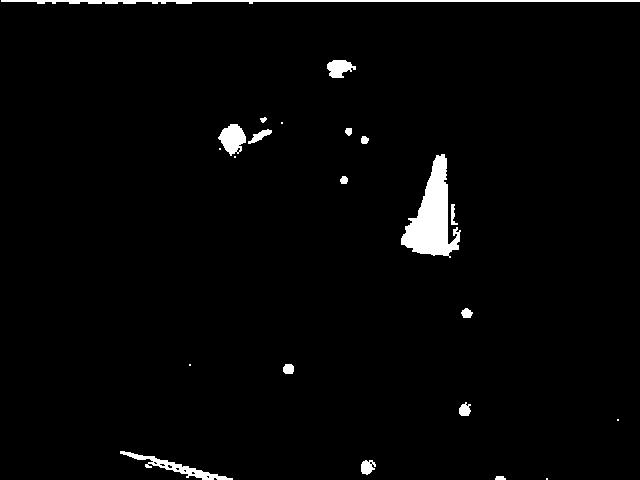
The goal of the Toro project is to automate a Toro riding lawnmower, for use on the fairways of golf courses. The challanges in this include navigation, coverage, and perhaps most importantly, given the platform, obstacle detection.
Various methods of obstacle detection are being investigated, including radar, laser, and computer vision. A pure computer vision solution would be ideal, as vision systems are generally much cheaper than radar and laser sensors. However, there are a number of challanges to using only vision, including:
However, a slightly more sophisticated approach yields better results. By using a training set of non-obstacle pixels, we can construct a PDF of the expected colors for grass. Then, when testing on new images, we determine whether the pixel is grass or not by thresholding on it's probability of being grass, based on the prior training data. There is a movie of this below.
These images were segmented using a color-threshold approach.
Original image:

Obstacle image without shadow compensation:

Obstacle image with shadow compensation:

recFrontLawn.mpg - A 60x timelapse of the mower mowing the REC front lawn area
Movies
MowerWalkAround.avi - a quick tour of the mower platform - 12 Megs, AVI format.
toro_navigation.mpg - a 4 minute movie of
the mower navigating a coverage pattern while detecting obstacles. 16 Megs,
MPG format
Color threshold segmentation (no shadow compensation) - 8 Megs, AVI format.
Color threshold segmentation (shadow compensation) - 10 Megs, AVI format.
PDF-based segmentation - 11 Megs, AVI format.
PDF-based segmentation of a harder sequence - 14 Megs, AVI format.
Pending.